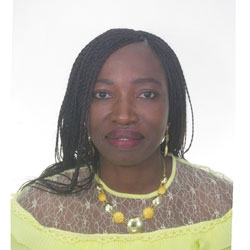Cameroon
The Context
Cameroon lies on the Gulf of Guinea, with Nigeria to the north-west and Equatorial Guinea and Gabon to the south.
With a population of 26.5 million, it has significant natural resources, including oil, gas, minerals and timber. It produces coffee, cotton, cocoa and maize.
Economic growth rose from 2.2 per cent in 2009 to 4.02 in 2019 according to the World Bank.
Cameroon is a member of the Central African Economic and Monetary Community, which takes some 20 per cent of its exports.
Agriculture is vital to the economy, employing half the workforce. Alongside agro-industrial plantations and some large private farms Cameroon has about two million small family farms.
Poverty is widespread in rural areas, increasing concentrated in Cameroon’s northern regions, and rose 12 percent to afflict 8.1 million people between 2007 and 2014, according to the World Bank.
Lack of employment; poor access to water, electricity and roads; lack of healthcare and education facilities; and corruption and mismanagement of public funds all contribute to poverty. Young people in rural areas are among the most vulnerable.
The family smallholdings which dominate farming often rely upon manual effort and casual labour and use few or no external inputs.
Because commercial farming is underdeveloped, Cameroon imports large quantities of food. Yet it has great potential to meet its food demand and improve the living conditions of the rural population.
The Strategy
In Cameroon, IFAD loans seek to enhance the wellbeing of rural poor people.
Activities are targeted at improving the incomes and the food and nutritional security of the rural poor, especially women and young people.
Key activities include:
- aiding farms and small rural enterprises to use more productive systems that are resilient to climate change; and
- supporting small rural producers and promoters of agro-pastoral enterprises that combine livestock and crop production, and increasing access to efficient financial and non-financial services and to profitable markets.
Country Facts
Poverty has remained high at around 44 per cent of the population, showing almost no change overall since 2001.
Poverty has risen in rural areas, and is worst in the three northern regions.
Rural areas are home to about 55 per cent of the working population.
